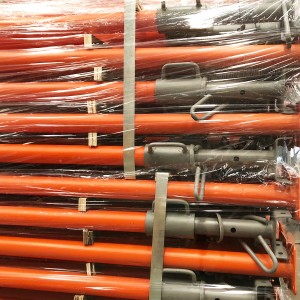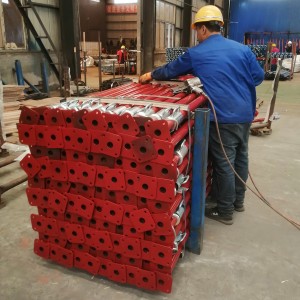Between August and September, EHONG’s adjustable steel props supported construction projects across multiple countries. Cumulative Orders: 2, totaling nearly 60 tons in exports.
When it comes to applications, these props truly are versatile performers. They primarily serve as temporary supports during concrete beam and slab pouring, where their stable load-bearing capacity prevents structural deviations caused by support deformation. In highway expansion projects, they secure roadbed formwork – the flexible height adjustment ensures formwork remains level despite changing road slopes. Beyond these uses, they’re widely employed in factory construction for roof support and subway projects for temporary shoring, proving equally effective in both civil building and infrastructure applications.
So, what makes these steel props so popular internationally? It boils down to three key advantages that directly address core construction needs:
First, they offer reliable load-bearing capacity and excellent weather resistance. Made from premium Q235 steel through forging processes, each prop features a hot-dip galvanized surface that effectively fights rust – even in rainy, humid conditions. This durability doubles the product’s service life compared to standard steel props, significantly cutting long-term maintenance costs.
Second, their flexibility and adaptability stand out. With an impressive telescopic range, height adjustment requires no special tools – workers simply turn the adjustment nut by hand. Whether dealing with varying floor heights in residential concrete pouring or uneven terrain in highway roadbed projects, these props adapt quickly to different site conditions.
Third, the lightweight design makes handling easy. Weighing only 15-20 kilograms per unit, two workers can comfortably carry and position them. This reduces labor requirements for transport and installation, particularly valuable in tight urban sites or remote locations.
Installation is straightforward enough for international crews to master quickly. The process typically involves four simple steps:
Begin by selecting and preparing locations according to construction drawings. Clear the area of debris to create a level bearing surface.
Then assemble and adjust – connect the base plate, outer tube, and U-head in sequence. Rotate the adjustment nut to set the height slightly below the designed level.
Next, secure and reinforce the installation. Ensure the U-head sits flush against the supported structure, checking that vertical alignment stays within 1% deviation. When needed, place steel plates under the base to enhance stability.
Finally, monitor during operation. Regularly check for any loosening throughout the construction process. Make fine height adjustments whenever load conditions change.
Moving forward, EHONG will provide stable and efficient support solutions for more overseas infrastructure projects.
Post time: Sep-15-2025








